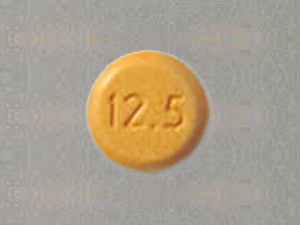Lorazepam vs. Diazepam: Which Benzo Is Right for You?
Lorazepam vs. Diazepam are both members of the benzodiazepine class of medications, commonly referred to as benzos. These drugs are prescribed to treat various medical conditions, particularly anxiety disorders and certain forms of epilepsy. While they have similar mechanisms of action, there are essential differences between the two, including their uses, side effects, and dosing.
In this blog post, we will compare Lorazepam and Diazepam to help you understand which benzo may be the right choice for your specific needs. To dive into the depth of the topic, keep reading.
Medication Name
Lorazepam:
Lorazepam, generally known by its brand name Ativan, is a fast-acting benzo that is used to manage anxiety disorders, sleep disturbances, and acute panic attacks. You may order Ativan online to improve your quality of life. Lorazepam is available in tablet and injection forms and is known for its rapid onset of action.
Diazepam:
Diazepam, marketed under the brand name Valium, is a versatile benzo that has a broader spectrum of uses. It is prescribed for anxiety, panic disorders, muscle spasms, alcohol withdrawal, and as an adjunct in the treatment of seizures. Diazepam comes in tablet, liquid, and injection forms. If you want to buy Diazepam online to treat your condition effectively, you must choose a reliable pharmacy.
Warnings
Before we delve into the details of Lorazepam and Diazepam, it’s crucial to be aware of the potential risks and warnings associated with benzodiazepines:
Addictive Potential: Both Lorazepam and Diazepam have a high potential for dependence and addiction if used improperly or for extended periods. It’s essential to use them under the strict guidance of a healthcare expert.
Tolerance: Over time, your body may develop a tolerance to benzos, requiring higher doses to achieve the same effects. This can increase the risk of addiction.
Withdrawal Symptoms: Abruptly stopping benzo use can lead to withdrawal symptoms, such as tremors, anxiety disorders, and seizures. A healthcare expert should guide the tapering process when discontinuing these medications.
Sedation: Benzodiazepines can cause drowsiness and impair motor skills, making it dangerous to employ heavy machinery or drive while taking them.
Potential for Overdose: Overdosing on benzos, especially when combined with alcohol or other CNS depressants, can be life-threatening. It is crucial to use them as prescribed.
Uses
Lorazepam:
Anxiety Disorders: Lorazepam is commonly prescribed for the short-term management of anxiety disorders.
Insomnia: It may be used to alleviate acute insomnia symptoms due to its calming effects.
Panic Attacks: Lorazepam can provide rapid relief during acute panic attacks.
Diazepam:
Anxiety Disorders: Like Lorazepam, Diazepam is used to manage anxiety disorders, although it has a more extended duration of action.
Muscle Spasms: Diazepam is effective in treating muscle spasms and spasticity.
Alcohol Withdrawal: It is employed during alcohol withdrawal to manage symptoms like anxiety and seizures.
Seizures: Diazepam is used in combination with other anticonvulsants to control seizures and status epilepticus.
How to Use Lorazepam:
Oral Tablets: Lorazepam is available in tablet form and is usually taken 2 to 3 times a day, with or without food, as directed by a healthcare expert.
Oral Solution: For patients who have trouble swallowing tablets, an oral solution is available. Measure the dose carefully using a medicine dropper.
Injection: In emergency situations or when rapid onset is needed, healthcare experts may administer Lorazepam via injection.
Diazepam:
Oral Tablets: Diazepam is typically taken 2 to 4 times daily as directed, with or without food.
Oral Liquid: The liquid form is measured with a special dose-measuring spoon or device.
Injection: Diazepam injections are reserved for specific medical situations, and healthcare experts administer them.
Side Effects
Both Lorazepam and Diazepam can cause side effects, although the severity and likelihood of these side effects may vary from person to person. Common side effects for both medications include:
- Drowsiness
- Dizziness
- Weakness
- Unsteadiness
- Dry mouth
- Nausea
In a few cases, more severe side effects can occur, such as:
Lorazepam:
- Hallucinations
- Confusion
- Depression
- Memory problems
- Changes in mood or behavior
- Allergic reactions (rash, itching, swelling, severe dizziness)
Diazepam:
- Changes in libido
- Blurred vision Respiratory depression (rare)
- Severe drowsiness Mental/mood changes (e.g., agitation, hallucinations)
- Signs of infection (e.g., fever, persistent sore throat)
Along with these, you may see additional side effects from Valium (Diazepam). You must be cautious after buying Valium online.
Diazepam dosages
Diazepam is available in various strengths, with the most common doses being 2mg, 5mg, and 10mg. These different strengths allow healthcare experts to tailor the treatment to the specific needs of users.
Diazepam 2mg: This is the lowest dose available and is often prescribed when a mild anxiolytic effect is required. It may help treat symptoms of anxiety and nervousness. Diazepam 2mg is also sometimes used as a muscle relaxant in lower doses.
Diazepam 5mg: The 5mg dose is slightly stronger and is often used for individuals with moderate anxiety, muscle spasms or as a pre-operative sedative. Diazepam 5mg provides a more pronounced calming effect than the 2mg dose.
Diazepam 10mg: The 10mg dose is the highest strength commonly prescribed. It is generally reserved for more severe cases of anxiety, painful muscle spasms, or as a sedative before medical procedures. Diazepam 10mg dose has a more pronounced sedative effect and may be used for short-term relief of acute symptoms.
Lorazepam dosages
Lorazepam is available in different strengths to cater to the specific needs of patients. Here’s an overview of lorazepam doses and their typical uses:
Lorazepam 0.5mg: This is the lowest strength available and is often prescribed for mild to moderate anxiety. Lorazepam 0.5mg can help alleviate symptoms such as nervousness and restlessness. In some cases, this lower dose may be used to help with sleep disorders or as a pre-operative sedative in minor medical procedures.
Lorazepam 1mg: The 1mg dose is slightly stronger and is used for people with moderate to severe anxiety or anxiety-related disorders. Lorazepam 1mg provides a more pronounced calming effect than the 0.5mg dose and is often prescribed for a broader range of anxiety-related conditions.
Lorazepam 2mg: Lorazepam 2mg is the highest strength typically prescribed. It is reserved for more severe cases of anxiety or panic disorders, and it provides a stronger sedative effect. It may be used to address acute anxiety or as a pre-operative sedative for major medical procedures.
Precautions
Before starting either medication, it’s crucial to consider certain precautions:
Allergies: Inform your healthcare expert of any known allergies to Lorazepam, Diazepam, or other medications.
Medical History: Provide a comprehensive medical history, especially if you have a history of substance abuse, depression, or kidney/liver disease.
Pregnancy and Breastfeeding: Both medications should be used with caution during pregnancy and while breastfeeding, as they can pass into breast milk.
Age: Elderly people may be more sensitive to the effects of these medications, especially drowsiness and dizziness.
Alcohol and Other Substances: Avoid alcohol and other substances that may interact with benzos. Combining them can lead to dangerous sedative effects.
Tolerance and Dependence: Be aware of the potential for tolerance and dependence, and use these medications only as directed.
Drug Interactions
Both Lorazepam and Diazepam can interact with various other medications. You should inform your healthcare expert of all the drugs and supplements you are taking. Some common interactions include:
- Other CNS depressants (e.g., alcohol, opioids)
- Antidepressants
- Antihistamines
- Antifungal medications
- Medications for seizures
- Muscle relaxants
- Pain relievers
- Sleep medications
- Medications affecting liver enzymes
Overdose
An overdose of Lorazepam or Diazepam can be life-threatening. Symptoms of an overdose may include:
- Extreme drowsiness
- Confusion
- Slurred speech
- Loss of coordination
- Fainting
- Slow and shallow breathing
- Unresponsiveness
If you suspect an overdose, you should seek urgent clinical attention or call a poison control center.
Notes
- Follow your healthcare expert’s instructions carefully when taking these medications.
- Keep a record of the effects and side effects you experience and share this information with your healthcare expert.
- Do not increase the dose or take these medications for a longer period than prescribed.
Storage
- Store both Lorazepam and Diazepam at room temperature, away from light and moisture.
- Keep them out of reach of pets and children.
- Dispose of any expired or unused medicine properly, as advised by your pharmacist.
Important Note
I hope you find this blog informative. When deciding between Lorazepam and Diazepam, consult your healthcare expert. They can assess your specific needs, medical history, and the nature of your condition to determine the most suitable option. Both medications are effective when used appropriately, but they are not intended for long-term use.
Your healthcare expert will also guide you on the duration of treatment and the necessary steps for tapering off the medication to prevent withdrawal symptoms. Always prioritize your safety and well-being when considering the use of any medication.







Leave a Reply